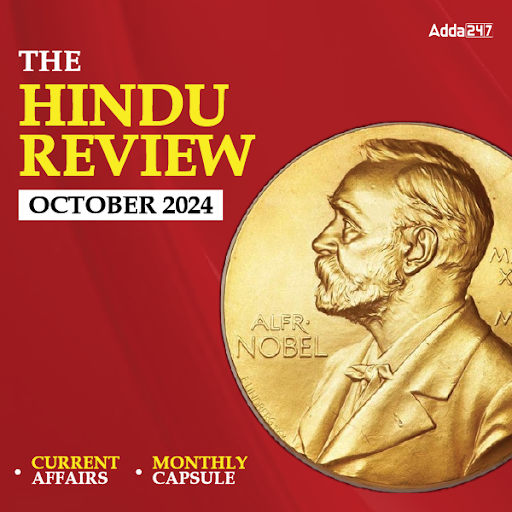Dear Aspirants,
Reasoning Ability is an onerous section. With the increasing complexity of questions, it becomes hard for one to give it the cold shoulder. Today is the Day 60 of the 60 Days SBI Clerk Prelims Study Plan. The only way to make the grade in this particular section in the forthcoming banking exams is to practice continuously with all your heart and soul. And, to let you practice with the best of the latest pattern questions, here is the Adda247 Reasoning Quiz based on the study plan and the exact same pattern of questions that are being asked in the exams.
Directions (1-5): Study the information and answer the following questions:
In a certain code language
“morning class prime” is coded as “20#N 22#K 8#X ”
“railway memory puzzle” is coded as “2#I 22*K 2*N”
“Februar growth identical” is coded as “9#U 19*T 15#R”
Q1. What will be the code for “aniket”?
(a) 20*Z
(b) 7*Z
(c) 20#Z
(d) 7#Z
(e) None of these
Q2. What will be the code for “rajesh mohit”?
(a) 19*I 7*N
(b) 19#I 7*N
(c) 19*J 7#N
(d) 19*I 7#N
(e) None of these
Q3. What is the code for “shubham”?
(a) 12#H
(b) 14*H
(c) 14#H
(d) 13#H
(e) none of these
Q4. Which of the following may be coded as “6#I”?
(a) ramu
(b) raamu
(c) ram
(d) rammuu
(e) none of these
Q5. Which of the following may be coded as “5*m”?
(a) noov
(b) mast
(c) comm
(d) powv
(e) none of these
Directions (6-10): Study the following questions and answer the questions referring to the word sequence given below:
WHITE BLUE PURPLE BLACK ORANGE
Q6. If words are arranged according to the alphabetical series from left to right, then which word is third from the right end?
(a) WHITE
(b) BLUE
(c) PURPLE
(d) BLACK
(e) None of these
Q7. If each letter in each of the word is arranged according to the alphabetical series, then which is the third letter of the word, which is fourth from the left end?
(a) H
(b) P
(c) I
(d) C
(e) G
Q8. If each vowel of each word is changed to its next letter and each consonant of each word is changed to its previous letter according to the alphabetical series, then How many words contain vowel?
(a) Two
(b) None
(c) One
(d) Three
(e) None of these
Q9. If each consonant of each word is changed to its previous letter according to the alphabetical series, then How many meaningful words can be formed?
(a) Two
(b) None
(c) One
(d) Three
(e) None of these
Q10. If 1st and 3rd letter of each word are interchanged, then How many meaningful words can be formed?
(a) Two
(b) None
(c) One
(d) Three
(e) None of these
Directions (11-15): In these questions, a relationship between different elements is shown in the statements. The statements are followed by two conclusions. Give answer
Q11. Statement: M<P ; G<D≤E; F>P ; G >F
Conclusion: I. E≥M II. M<G
(a) if only conclusion II is true.
(b) if only conclusion I is true.
(c) if neither conclusion I nor II is true.
(d) if either conclusion I or II is true.
(e) if both conclusions I and II are true.
Q12. Statement: M≥K; B> A; K=H>D>B
Conclusion: I. A>H II. H≤A
(a) if both conclusion I and II are true.
(b) if only conclusion I is true.
(c) if neither conclusion I nor II is true.
(d) if either conclusion I or II is true.
(e) if only conclusion II is true.
Q13. Statement: P>K; N>T; M<N; K≥T
Conclusion: I. P>T II. P>M
(a) if only conclusion II is true.
(b) if either conclusion I or II is true.
(c) if neither conclusion I nor II is true.
(d) if only conclusion I is true.
(e) if both conclusions I and II are true.
Q14. Statement: J> T> R≤N; N<M; U>T
Conclusion: I. R<U II. R<M
(a) if only conclusion II is true.
(b) if only conclusion I is true.
(c) if neither conclusion I nor II is true.
(d) if either conclusion I or II is true.
(e) if both conclusions I and II are true.
Q15. Statement: D>B; F<T<M> B>Q;
Conclusion: I. D≥ F II. F>D
(a) if only conclusion II is true.
(b) if either conclusion I or II is true.
(c) if neither conclusion I nor II is true.
(d) if only conclusion I is true.
(e) if both conclusions I and II are true.
You may also like to read:






 The Hindu Review October 2022: Download ...
The Hindu Review October 2022: Download ...
 How to Prepare for RBI Grade B Interview...
How to Prepare for RBI Grade B Interview...
 SBI PO Previous Year Question Papers Wit...
SBI PO Previous Year Question Papers Wit...




